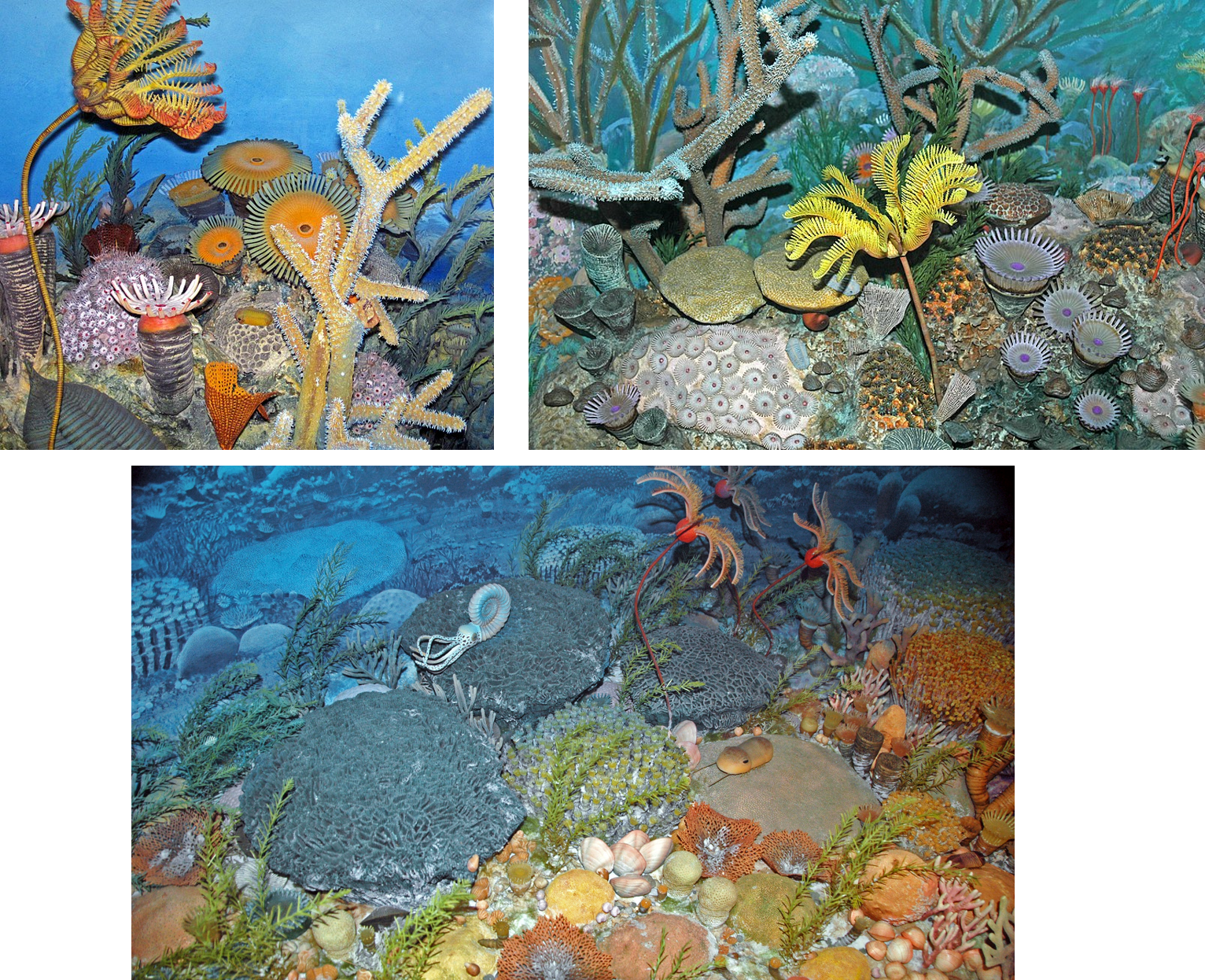Listen to Episode 65 on PodBean, Spotify, YouTube, or wherever you’d like!
It’s Episode 65, and you know what that means … extinction! This time, we address what is traditionally considered one of the “Big 5,” but doesn’t seem to be “one” extinction at all. Geologists and paleontologists continue to work at piecing together the various causes and consequences that create an extended series – several millions years long – of very unfortunate events that altogether comprise the Late Devonian Extinction(s).
In the news
Teeth reveal a surprising diversity of herbivorous crocs
More teeth reveal the social behavior of Ice Age peccaries
We gave a talk about the podcast at NAPC in California! Listen to the episode to hear it!
The Devonian Period
Between 420 million and 359 million years ago, the climate was warm, the sea levels were high, and most of the globe’s landmass was concentrated into two supercontinents, Euramerica and Gondwana.

Shallow tropical seas were widespread, and they came to be colonized by some of the most expansive reef systems in Earth history. Familiar marine creatures of the Paleozoic Era – including trilobites, brachiopods, and crinoids – were joined by an incredible radiation of vertebrate life that saw the rise of the armored placoderms, true sharks and rays, and the very first land-crawling amphibians. On land, plants evolved new tools like trees and seeds and generated the first true forests.

Famous Devonian fossil sites include the Rhynie Chert and Miguasha National Park.
Mass Extinction & Biodiversity Crisis
The Late Devonian experiences such an enormous loss of life that it’s considered one of the famous “Big 5” mass extinctions. By the time the Period ended, reef systems around the world had completely collapsed and entire communities had been restructured on land and in the ocean. Some groups of life meet their end here, including major groups of trilobites, cephalopods, brachiopods, land-dwelling vertebrates, and reef-building animals. Others, like placoderms (armored fish), vanish entirely.
As with all past mass extinctions, this sets the stage for the world as we know it. After the Devonian, the ecosystems that recover are dominated by more familiar groups of fish and land-living vertebrates, and invertebrate communities in the oceans begin to look more familiar. When coral reefs eventually bounce back (which takes quite a while), they will be made-up of modern coral groups.

This event is very complicated. It wasn’t one mass extinction, but a series of pulses of crisis that took place over at least 20 million years, including two notable major events: the Kellwasser Event (~375 million years ago) and the Hangenberg Event (~359 million years ago). This time frame saw dramatic fluctuations in global climate, sea level, and ocean chemistry.
Exactly what caused these disturbances isn’t totally clear. They’ve been linked to all the classic options: volcanic eruption, asteroid impact, and orbital dynamics. Some have even suggested that the rise of land plants contributed to the crisis by impacting soil erosion and weathering (which can lead to algal blooms and chemical chaos) and atmospheric composition (photosynthesis and soil weathering both pull carbon dioxide out of the air). And it’s been suggested that the Kellwasser Event wasn’t a mass extinction at all, but a time period of reduced speciation.
Learn more:
General info about the Late Devonian (non-technical)
How do you have a mass extinction without an increase in extinctions? (non-technical)
The Devonian Plant Hypothesis (technical)
A recent article about Romer’s Gap (non-technical)
—
If you enjoyed this topic and want more like it, check out these related episodes:
- Episode 77 – Fins to Feet: The Fish-Tetrapod Transition
- Episode 36 – Reefs
- Episode 141 – Supercontinents
We also invite you to follow us on Twitter, Facebook, or Instagram, buy merch at our Zazzle store, join our Discord server, or consider supporting us with a one-time PayPal donation or on Patreon to get bonus recordings and other goodies!
Please feel free to contact us with comments, questions, or topic suggestions, and to rate and review us on iTunes!
Hello there! I started listening to this fantastic podcast earlier in the year and just finished this episode (I wonder how long it will be until I catch up). In this ep you encourage folks to get in touch, so I figured OK I will.
It’s awesome to find a great science podcast done by scientists and in my field of interest. I do have a degree in Conservation Biology, and these days I mostly work retail (but in a store dedicated to helping people reduce waste) with the occasional gig doing field ecology – mostly flora and bird surveys in the spectacular outback of Western Australia.
I’m not sure what topics are coming up, but if you haven’t done it already – an episode on extremophiles would be very cool. I know there are other things I’d like to hear about too, but I’ll see if you do them in the six dozen or so episodes I still need to listen to before I catch up!
LikeLike
Thanks for listening and for a great suggestion! We’ll add it to the list!
LikeLike